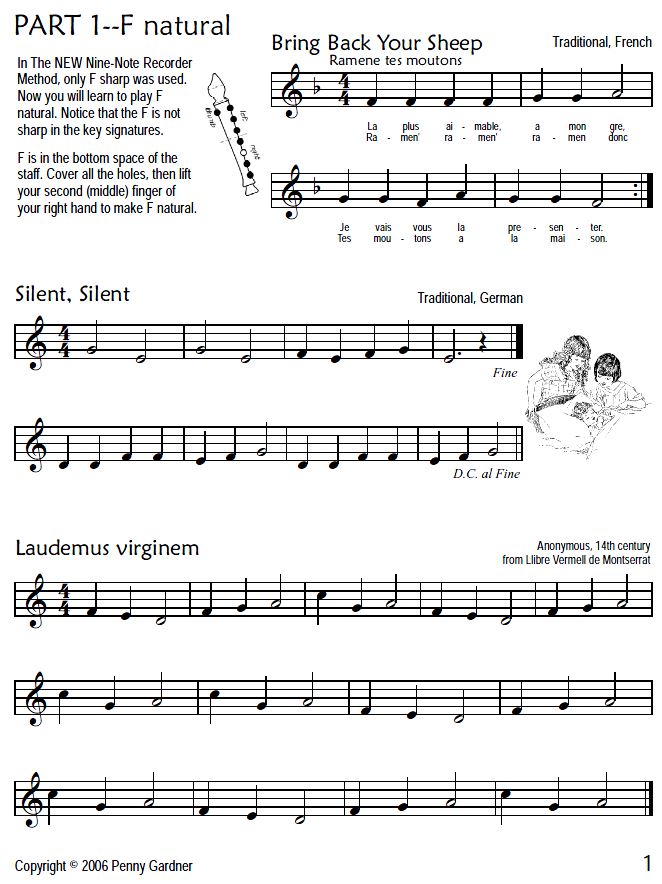
Most players find it difficult to judge how large their thumbhole opening is because it is hidden by the recorder. High notes are much easier to play if the thumbhole opening is small. One important rule here is 'try to keep the thumbhole opening as small as possible without closing it'.

Indeed, in some cases, it may vary even between two apparently identical instruments made by the same maker to the same model. The relationship is not constant from make to make or from model to model. You will need to learn to vary one of these parameters without varying the other if you are to cope with the specific demands of your particular recorder or of other instruments you may try out. High notes demand two things - firstly, sufficient energy from the tonguing stroke to overblow the recorder (this is necessary to excite the upper harmonic), and secondly, a sufficient flow of air to maintain the pressure required to 'feed' or support the note and to prevent it dropping back down to a lower harmonic. Most recorder players find the very highest notes difficult to play but, except where the instrument itself is defective, or the windway has become filled with saliva, the production of high notes on the recorder is really just a matter of confidence, somewhat like learning to ride a bike or to ski. The use of the thumb in the production of high notes is a technique you will need to understand if you are going to continue successfully up the scale towards the third octave. We call this thumbing technique 'pinching'. This is a property of all the notes produced by opening the thumbhole in this way. You will notice that the recorder requires somewhat more air to sustain the E in the second octave than that in the first octave.
E NOTE RECORDER FREE
The result is a clear E in the second octave free of any undertone from the bottom E. Because the recorder has a thumbhole, the player can produce a second octave E by bending the thumb to make a very small opening in the thumbhole and by using a slightly stronger tonguing stroke.

On a duct pipe with no thumbhole, 'overblowing' is the means by which all higher notes have to be produced. E in the second octave, also called middle E. If you finger the low E and just tongue again with a harder tonguing sound you will find it easy to push the recorder to produce the first harmonic to the bottom E which for this fingering is one octave higher, i.e.
E NOTE RECORDER HOW TO
How To Tongue The Note E in the Second Octave An alternative fingering for second octave E, where the thumbhole is left uncovered, is written 1 2 3 4 5 7a 7b. Using the standard nomenclature, the fingering for second octave E is written X 1 2 3 4 5, where X indicates a pinched thumb or vented thumbhole. Below that we give the standard fingering for this note, the fingering you would use under normal circumstances. Click on the play button in the Sibelius score to hear it.

The seventeenth note we learn, E in the second octave on the descant (soprano) recorder, lies on the top space of the treble clef. This section gives advice on the following topics: Home :: resources :: music theory & history :: recorder lessons :: music dictionary :: physics of musical instruments :: e-monographsĬontents :: help page :: first things first :: fingering charts :: glossary of recorder terms :: Quick C :: Quick F :: comments or queries?Ĭ :: C#/D b :: D :: E b/D# :: E :: F :: F#/G b :: G :: G#/A b :: A :: B b/A# :: B :: Third Octave Dolmetsch Online - Recorder Method Online Descant E natural


 0 kommentar(er)
0 kommentar(er)
